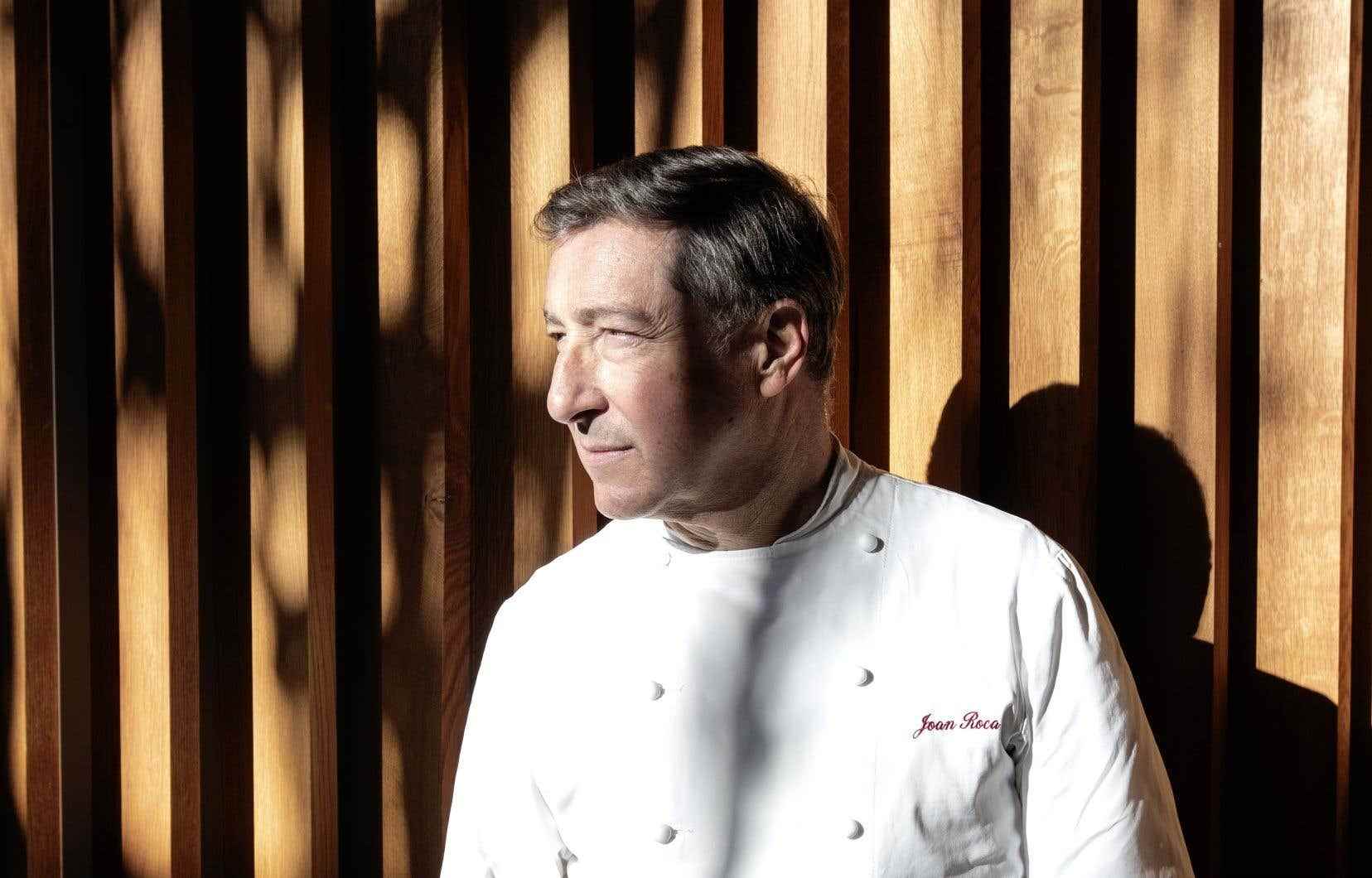This text is part of the special book Plaisirs
Ah, Spanish gastronomy… Everyone who tastes it admits that it is fresh, colorful and bursting with flavour. A real ray of sunshine on the plate, just like that of the countries bordering the Mediterranean Sea. But we often ignore how colorful it is. Andalusia, Castile, Rioja, the Basque Country, Valencia, Madrid… All these regions have their own cuisine, rich in distinctive products, and they are brewed by time and cultural exchanges. Catalonia alone constitutes a real gourmet breeding ground through its specialties, its techniques and its wines. To discover it, we went to find the best guide there is, passing through Montreal as part of the launch of the Catalan beer Estrella Damm in Quebec: the three-star chef Joan Roca, whose restaurant, culinary signature and heart are inseparable from this region.
Catalan cuisine is in the genes of Joan Roca. As a child, when he came home from school, he would invariably join his mother and grandmother in the kitchen to help them cook dishes that would be served at the family restaurant Can Roca, located in Girona. “I already liked being in this space, soaking up the aromas that floated around me. It was the best learning possible,” he says.
The young Joan therefore naturally turned to the profession of cook. But he never left Girona, where he successively studied and taught his art at the local hotel school, before returning to the stoves at Can Roca and then, a hundred meters away, at El Celler de Can Roca, which he founded with his two brothers in 1986. The rest of his story is a feat since this second restaurant was crowned with three stars by the Michelin Guide and was elected twice, in 2013 and 2015 , best restaurant in the world by the prestigious World’s 50 Best Restaurants.
A racy and mixed cuisine
Joan Roca is inexhaustible when he talks about the cuisine of his region. “It’s a multi-millennial kitchen [Gérone a 2000 ans d’histoire] which has both inherited French know-how and multiple inspirations gleaned over the occupations of the territory”, he says. Indeed, the Roman, Arab and Jewish civilizations brought in their luggage a set of techniques and products (pulses, tomatoes, potatoes, chocolate, spices, etc.) which merged with others, specific to the geography peculiar to Catalonia.
“We are located a very short distance from the sea and the mountains, which allows us to have access to fish and seafood, but also to many vegetables, fruits and meats from small producers, continues the chef. We often prepare chicken with lobsters, cuttlefish with artichokes, or snails with rabbit. »
Within a region so rich in products and cultural mixes, it is not surprising that the gastronomic specialties are very varied. They range from cod, anchovies and snails cooked in multiple forms, to meats cooked a la plancha, through an infinity of dishes based on round rice, greenery (cooked green vegetables), salads and cold cuts. Cheeses that can be eaten for dessert with fruit, as well as a slew of pastries, biscuits and sweets, are also on the Catalans’ menu. As for the wines, they are deployed in all ranges (Priorat, Montsant, Penedès, Empordà, etc.), including the effervescence with the famous Cava.
“We also have special techniques,” adds Mr. Roca. For example, we regularly use as a base for our dishes the sofregit, made with tomatoes, onions and, depending on the mood of the cook, sweet peppers, garlic and various spices (parsley, thyme, rosemary, saffron, red or bird pepper, cinnamon, etc.). We are also recognized for the picada, a paste made up of several products (your choice: almonds, walnuts, fresh herbs, toast, offal, chocolate, etc.) crushed in a mortar with spices and olive oil, and added to dishes and sauces to enhance their flavor and thicken them. »
The new Catalan cuisine
When founding his restaurant, Joan Roca wanted to modernize the Catalan culinary tradition. A successful bet, since for more than 35 years, his creations have surprised, touched and amazed fine forks around the world. How does he describe his vision? “It’s a cuisine of dialogue between the terroir, memory and innovative techniques,” he confides. I seek to astonish, while drawing my inspiration from my childhood and from the past of my region, which is sometimes very old. »
By way of example, the chef evokes his interpretation of the cordero con pan con tomato, a sandwich where tomato bread covered with slices of Serrano ham became the interior filling of two milk-fed mutton breasts cooked at low temperature and with crispy skin on the outside. “It is eaten with the fingers, like in my childhood”, specifies Mr. Roca. Then, he also mentions his carpaccio of pig’s trotters, a very popular dish in his region that he has managed to recreate in the form of thin translucent slices. “It has also become a new Catalan classic, offered in many restaurants! How modern cuisine can also inspire traditional cuisine,” he points out.
Meeting past and present, Joan Roca continues his exploratory work at El Celler de Can Roca, aware of the role he plays as a model for the new generation of Catalan chefs. “I don’t believe in globalization, but in diversity and transmission,” explains this vibrant representative of the Slow Food movement. I think that cooking is a wonderful vector of memory, culture, biodiversity and creativity. It expresses our identity, an identity that must be preserved at all costs, even if we do so in a non-conformist way. Come and discover our rich region to convince yourself! »
